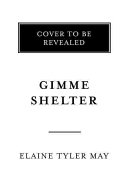2018 School Spending Survey Report
Fortress America
Basic. Dec. 2017. 256p. notes. index. ISBN 9780465055920. $30; ebk. ISBN 9780465093007. HIST
COPY ISBN
VERDICT This thoroughly researched and thoughtfully written social history is recommended to all who seek to understand our divided society.
RELATED
ALREADY A SUBSCRIBER? LOG IN
We are currently offering this content for free. Sign up now to activate your personal profile, where you can save articles for future viewing




Comment Policy:
Comment should not be empty !!!